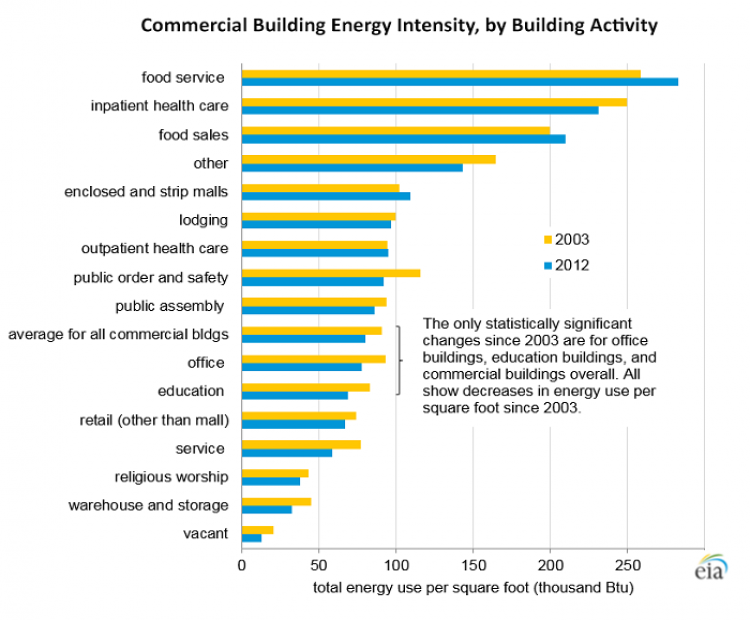You are here
A building's program scopes the project by outlining its goals, conditions, and objectives. The program is usually defined by the owner, but it is important to also involve occupants and designers to create it.
Different programs and schedules cause very different energy use
The program explains how the design will be used by specifying things like activities, occupancy, and schedule of operations. It also includes more detailed requirements such as: room sizes, space needed per person, relationship between spaces, equipment needed, and budget.
All these considerations affect the building's energy use. See Energy Loads for details.
Types of Programs
Some building programs are much more energy-intensive than others, and have different site considerations. For instance, in the US, educational buildings are relatively low energy intensity (averaging 83 kBTU/ft2/yr, 26 kWh/m2/yr) and are dominated by heating loads and lighting loads, while food service buildings are the most energy intensive (averaging 258 kBTU/ft2, 81 kWh/m2/yr) and are dominated by equipment loads.
For a detailed list of different energy intensities for different building programs in the United States, see the US Energy Information of Administration, 2012 Commercial Building Energy Consumption Survey: Energy Usage Summary.
Scheduling
Smart scheduling of building occupancy can reduce the need for active heating and cooling in a building, by avoiding the times of day or year with the harshest climate. For instance, a school in a hot climate can lessen its cooling energy needs by not holding classes during the daytime in the hottest summer months.
See Autodesk BPA Help to see building operating schedules and occupancy schedules by building type that are used in energy analysis.
Links and References
- The Data Book includes statistics on residential and commercial building energy consumption. Data tables contain statistics related to construction, building technologies, energy consumption, and building characteristics.


